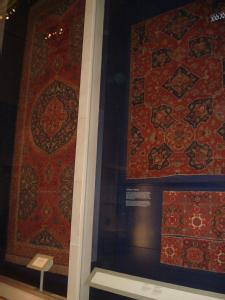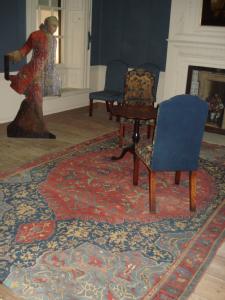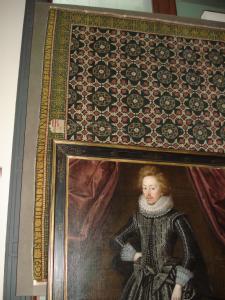My Research
Flying Carpets? Material Culture and the Global Trade of Turkish Carpets, c. 1400-1700
About Turkish Carpets
Knotted pile carpets were first produced in Anatolia hundreds of years ago, and are still made there today. During the Early Modern period, large numbers of carpets were exported to Europe from the East Mediterranean, where they became a part of everyday material culture. The popularity of Oriental carpets in Europe at that time is testified to by their frequent appearance in paintings, from Italian Renaissance images of the Madonna and Child, to English portraits of King Henry VIII, to 17th Century Dutch still lives. Thus carpets can be seen as having been a type of "global object", traded to and used in places far from their original place of production.
About the Project
This project aims to explore the idea of Turkish carpets as having been "global objects", looking in particular at their relationship with Europe. This area of enquiry will be aided by the construction of a database of surviving carpets in museums around the world, which will allow me to explore the relationship between artefacts and their representations, comparing what paintings say about the popularity of certain designs of carpets in Europe with still-existing carpets. The database will also allow for a study of how much a "Turkish" history of Turkish carpets can be written, and how/if it differs to a "European" story of Turkish carpets. For we are very reliant on European sources (paintings, inventories, existing carpets from European collections) in the study of Turkish carpets, but surviving carpets which were not produced for exportation to Europe may show the use of different patterns/designs/colour schemes etc., and so demonstrate that there was a difference between what the Turks were exporting, and what they were consuming themselves. Another area of investigation in this project will be the problems surrounding the naming of different carpet patterns, as they have all been named rather anachronistically, and often after painters who produced a depiction of that type of carpet (Lottos, Holbeins, Crivellis, Bellinis...). I also wish to explore whether it is accurate/useful to actually call Turkish carpets "Turkish", as many of them may have been made in Cairo, Syria, or Transylvania, or even in East Anglia!(See the central illustration below for a British attempt at an Oriental carpet)



Supervisors:
Useful Links:
- 'Global Commodities' Project Homepage
- Global History and Culture Centre
- Second Year History Option Module 'Galleons and Caravans'
- Department of History
